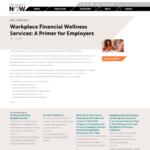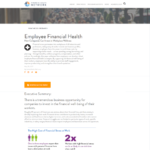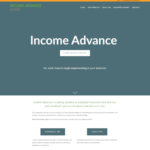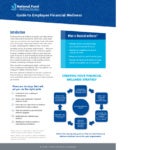Job Quality Tools Library > Section 4: Strengthening Practices to Improve Job Quality > Tools: Retirement Savings and Financial Wellness
Originally posted: May 11, 2020
Last updated: April 14, 2023
Section 4, the core of the library, includes tools designed to address specific components of job quality. Once organizations have determined their job quality priorities, they can turn to these tools to shift practices in the areas they have deemed most urgent, either in their own organizations or in the businesses with which they partner.
We’ve organized tools into categories that reflect the job quality attributes most commonly cited across the job quality frameworks and definitions included in Section 1. These attributes include wages, benefits, scheduling, legal rights, equity and inclusion, opportunity to build skills and advance, supportive work environment, worker voice, and employee ownership. Each attribute also includes sub-categories for ease of navigation.
↓ Tools and Resources Below the Box ↓
Library Navigation
- Job Quality Tools Library Homepage
- About This Library
- Section 1: Understanding Job Quality
- Section 2: Assessing Job Quality
- Section 3: Engaging Businesses on Job Quality
- Section 4: Strengthening Practices to Improve Job Quality
- Section 5: Monitoring Improvements in Job Quality
- Special: COVID-19 Response Tools and Resources
- Index of Tools by Field
Tools

Who’s It For: Employers, Economic Development, Investing and Lending, Workforce Development
What’s It For: This toolkit includes a primer to workplace financial wellness services, questions to consider when exploring these services, and employer experiences with provision of these services. These supports can contribute to job quality when paired with adequate compensation by helping employees manage finances and build assets. This resource includes descriptions of common services, such as financial counseling and coaching, debt management, savings products, and online financial management tools. This tool is most useful for businesses interested in adding or expanding financial wellness benefits. Partners could also share this tool with businesses or could use it to strengthen their own organizations’ financial wellness supports.

Pacific Community Ventures – Retirement + Wealth Building
Who’s It For: Employers, Economic Development, Investing and Lending, Worker Advocacy, Workforce Development
What’s It For: This chapter in Good Jobs, Good Business – a toolkit for small business owners seeking to improve job quality – provides guidance on supporting employees to save for retirement. It makes the case that having an employer-sponsored retirement plan can increase employee job satisfaction and retention and provide tax benefits for the business and its employees. This resource is designed for small business owners but has also been used by partners (including lenders and workforce development organizations) to coach businesses on job quality improvements with potential business benefits.

Financial Health Network – Employee Financial Health: How Companies Can Invest in Workplace Wellness
Who’s It For: Employers, Economic Development, Investing and Lending, Workforce Development
What’s It For: This guide outlines steps to create and implement an employee financial health strategy. When paired with adequate compensation, these services can support workers to save. We recommend turning to page 21 for an actionable, 7-step approach to developing a strategy. This resource also explains the need and business case for supporting worker’ financial stability, with helpful data indicating the impact of financial instability on worker productivity, morale, attendance, turnover, and health, as well as guidance on available financial products to consider. This tool has application for businesses and for practitioners that engage employers to support workers.

B Lab and Rhino Foods – Income Advance Guide
Who’s It For: Employers
What’s It For: This guide is designed to help support employers to implement an income advance program for employees in partnership with a financial institution. These programs provide small, same-day emergency loans to help workers weather financial emergencies and reduce stress. The tool includes an online resource library and a virtual peer group for information and support. This tool can be used by employers and the practitioners who advise them.

National Fund for Workforce Solutions – Guide to Employee Financial Wellness
Who’s It For: Employers, Economic Development
What’s It For: This six-step guide can help employers assess their employees’ financial stability and make an actionable plan to strengthen financial wellness. The foundational step includes assessing employee wages and benefits to ensure workers are earning a livable wage. The following steps guide employers through various financial wellness solutions, including how to implement and evaluate strategies and solicit feedback. This guide is written for employers, it but could also be used by workforce development professionals or worker advocates who work closely with employers.
Supplemental Resources
- Financial Health Network – Advancing Equity Through Worker Financial Health: A Framework for Employers. This brief provides a framework to help HR leaders design benefits programs aimed at improving employees’ financial health, a common equity concern and component of job quality. The guidance offered centers equity approaches such as broadening access to supports and targeting outreach efforts to financially vulnerable groups. Employers who are interested in embedding a DEI lens into the design of their benefits programs and closing financial health gaps among their workforce may find this resource helpful. Workforce development and worker advocacy professionals may also want to share this with their employer networks.